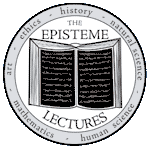This is all a matter of specifics. Obviously, an apple is an apple, a dog a dog, and a clothespin a clothespin. A is A. But when we begin to talk about the attributes of these objects, things change. If we are classifying an object by a certain amount of characteristics it has, such as its color, shape, or weight, questions arise. There are many objects on this earth that contain similar and same characteristics. Obviously, a orange marker is semi-cylindrical and orange, but so is a carrot. I think Identity should mean EVERY characteristic of the object, containing every detail that the thing possesses. (we, as humans, will probably never be able to list all these out, but that's not the point) If identity is any more generalized than that, discrepancies will arise and two things will have similar traits. With this definition of Identity in mind, I think there can be no questions or arguments about Aristotle's rule.
t***~~~this is laurellllll by the way!!!~~~***
Monday, October 1, 2007
Subscribe to:
Post Comments (Atom)



4 comments:
But how can I know the true nature of an object? If I gaze across a meadow at a single tree, hold my arm at length and measure the height of the tree between a finger and thumb the tree might be three inches tall. Yet, if I walk to within five feet of the same tree, the tree is much larger and not measurable by my finger and thumb. Which is the real tree? I could describe the same tree as being three inches tall or three hundred feet tall and both are accurate. I struggle with how it can be both ways.
But how can I know the true nature of an object? If I gaze across a meadow at a single tree, hold my arm at length and measure the height of the tree between a finger and thumb the tree might be three inches tall. Yet, if I walk to within five feet of the same tree, the tree might be three hundred feet tall and not measurable by my finger and thumb. Which is the real tree? I could describe the same tree as being three inches tall or three hundred feet tall and both are accurate. I struggle with how it can be both ways.
Laurel, first of all...way to go! You have made some incredible points that need to be shared in class. First, you identify a problem of knowledge that arises from dealing with the characteristics of objects, and you offer a nice, concrete example with the carrot and the marker.
You also say, "We, as humans, will probably never be able to list all these out, but that's not the point." You are right and you are right. On the first point, it would seem that we face an infinite chain of ever more precise definitions, sort of like the myth that the earth rests on the backs of an infinite stack of turtles. There are, however, reductive physicalists who insist that the everything is explainable in completely physical terms, and if this is so, there should be some limit that is achievable.
Even more important, however, is that you are right that this is not the point. So what if we cannot know to some nearly infinite degree of precision? IB wants us to focus on the good reasons we have for knowing what we do. So, to get back to your wonderful concrete example, what does it take to know that the carrot is the carrot, or the marker is the marker?
A response to Dr. Magister...
You say, "I struggle with how it can be both ways." But is it both ways? Is the tree both three inches and three hundred feet tall, or does it merely appear one way and then the other? I think of Vergil's "esse quam videri"..."to be rather than to seem." I also think of Hamlet's, "Seems, madam? I know not seems." I would say that there is a difference between being and seeming, between appearance and reality. The question becomes whether we can ever get past the seeming and the appearance to the actual being and reality. Some people say you can, others say you can't.
Post a Comment